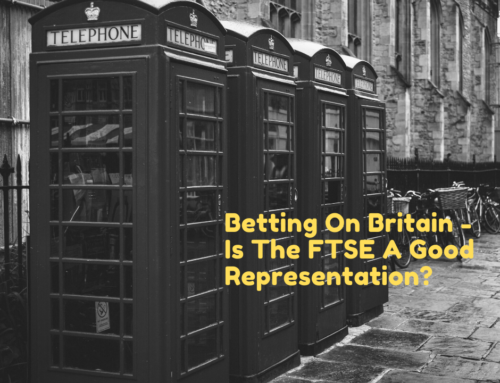This report details how to make a minimum un-levered return of 8.70% between now and the US Presidential Election on 6 November 2012. At the time of writing, the S&P 500 stands at 1433 and the DJIA stands at 13,323 (11 September 2012 closing prices).
“The market can stay irrational longer than you can stay solvent.” John Maynard Keynes
For many investors, never before has the above quote by Keynes been more relevant. Markets are rising irrationally to recent highs on anticipation of central bank interventions. US equity markets have been exposed to this hope-driven investment for most of Q2 2012. So-called ‘big short’ trades of 2012 are yet to materialise, with Investment Gurus calling the fall of the Euro, decline in US equities and collapse of US and German Bonds as inevitable occurrences; all of which have not particularly taken place as of yet. However, there remain bullish contenders who are calling for the sustained rise, rise and ever-inflated rise of the markets; amongst the most extreme being Laszlo Birinyi who has suggested the S&P 500 could be at 1500 by the end of 2012. These bullish investors have every right to make these statements and have only been encouraged by the irrational (or downright ludicrous) market behaviour of late. It is our view that this bubble of euphoria is about to burst and present the biggest opportunity of 2012 for savvy traders.
Putting 2012 into context…
Looking at the S&P 500 index as a base for US equities, the index has gained 14.03% YTD and 24.25% since the same point last year. Comparing this to the average annual return of the index, which is around 10.50%, it would surely indicate that business and economic conditions have improved significantly this year since the index is achieving above average returns. However, if we look over the economic backdrop, this is not an accurate assumption to make.
Economic data paints the picture…
Purchasing Managers Index (PMI) data is a solid gauge for the state of a country’s economic strength and a score below 50 indicates the country in question is in a stage of contraction. Data released this month for August reveals the US has a PMI of 49.60, down from 49.80 in the previous month. The value a year ago was at 52.50, which represents a decline of 5.52%. PMI data is often seen as a leading indicator of what can be expected in terms of GDP data from a country as well as other economic outputs. Therefore, the state of the US economy is not good by PMI standards and is in fact in-line with the rest of the world as the vast majority of countries are now showing a PMI below 50.
A mirage of employment improvements…
Unemployment data out of the US shows a rate of 8.10%, which is far above the long-term average rate of 5.79%, therefore representing a weak state in the economy. However, safety may be sought in the improvement in this figure as the previous month figure was slightly higher at 8.30% and even higher still this time last year when a rate of 9.10% was observed. Despite this, the rate of improvement is not substantial enough to warrant a conclusion that the economy is in a state of recovery and this in fact points to a sustained weakness in the US. Add this to the overall global employment situation, such as the Euro Zone, which has seen an increasing rate and a current status of 11.3% unemployment, and the picture is not so rosy.
The consumer is always right…
US Consumer Sentiment currently stands far below the long-term average of 85.54 at 75.00. The higher the figure, the more confident consumers are in the state of the economy. The current figure, released for August, was a shock rise from the previous month’s figure of 69.90 and was unexpected by most analysts who simply expected a slight rise. On a year-on-year basis the level is only slightly higher by 1.08% from 74.20. If you compare the consumer sentiment of a 1.08% yearly increase to the supposed investor sentiment of the stock market, with the S&P 500 higher by 24.25% and there is a clear discrepancy, and as the old saying goes “the customer is always right”.
Fundamentally numb…
It would be easy for bulls to suggest that the above points are simply interpreting the data in a manner that suggests negativity and that the economy is in fact in a state of recovery, albeit slow and small. Therefore, let’s have a look at the fundamental picture to show why this data is certainly not bullish. Starting with the Euro Zone, it is not particularly necessary for me to illustrate the negativity of this situation as it is well documented throughout mainstream media. Uncertainty is engulfing the future of the Euro and constituent members; particularly at present Greece, Spain and Italy. However, even the stronger nations such as Germany and France are experiencing the contagion from this crisis.
Europe: far from Utopia…
To put the situation in summary, discussions still continue regarding how to ‘save’ Spain and whether the country will require a full bailout package; debates remain about Greece’s immediate future within the single currency; and the ECB has just this month announced a bout of unlimited ‘sterilised’ bond buying. All of which are topics for long discussions in their own right and will not be covered in great detail in this article. So how does this affect the US? Well, for a start most of the companies featured in the S&P 500 and Dow Jones indices are multinational companies that rely on the stability of the Euro Zone as well as the US. Secondly, a look at US GDP paints a clear picture on the country’s reliance on European trade.
Passing the baton to the US…
Around 20% of the US trade balance comes from EU exports, therefore a downturn in the Euro Zone will have a vast impact on the US trade gap, which has been widening recently. The most recent release, for July, shows that exports to Europe have declined 11.70%, therefore depicting how the crisis is leaking onto US soil and affecting the strength of the economy. This may not have a direct effect on the expectations for US GDP yet, but a sustained downturn will inevitably lead to this.
An impending cliffhanger…
Of more impact to the US GDP is the impending risk of the Fiscal Cliff situation that puts the country at risk of a deep recession (I gave a basic overview of the Fiscal Cliff situation in a previous article). The resulting outcome of this could be a major downturn for global equity markets. UBS have stated as a worst-case scenario, if the US ‘falls off the cliff’ the S&P could result in trading at around 1000. That represents a decrease of over 30% from current levels. Although we believe it will not reach this level due to compromises and new deals being passed by congress, we do believe there is significant downside risk associated to the uncertainty and potential outcome of the discussions.
Missed earnings fray the rope…
To make matters worse, the US earnings season did not prove to be fruitful in general, yet the market appears to be trading at an above average level to earnings. The historic average Shiller Price/Earnings ratio (PE ratio) for the S&P is approximately 16. At present, the S&P is trading at a Shiller PE of about 22; over 35% higher than the average. It is not wise to trade based on earnings ratios, but hopefully this further portrays the irrationality of the current market levels and expectations of growth that are not being played out in actual data. So I am sure you are asking: based on all this doubt and pessimism, what could possibly be behind this rise in the equity indices? Good question. Luckily, this is also easy to answer.
Easing the pain with another Federal hit…
The hope of a new round of Quantitative Easing (QE) has spurred the markets on now for months despite acceptance from the majority that money printing can actually lead to greater economic weakness. The current market levels show a QE amount ‘priced’ into the market of between $500-$900bn. Therefore anything below this level will have a negative shock effect on the S&P; similar to a company missing earnings expectations. The argument for QE can be fairly balanced but we lean to the side of it being a negative solution. In fact, the metrics that the Federal Reserve (the Fed) follows in order to assess any central bank intervention, such as the unemployment rate, are not moving drastically enough into negative territory to warrant further stimulus. However, since the markets appear to be pricing in QE and investors are calling for this action, the Fed may have their hand forced and initiate the stimulus just to avoid a severe market correction. In addition to this, it is believed that a September announcement of QE may be the last chance for a while due to the Presidential Elections which adds red tape to the Fed’s autonomy. With interest rates at the lowest they can realistically be and the balance sheet not looking too healthy, the Fed appears to have one bullet left and in these uncertain times it will be interesting to see when they choose to use this.
A crossroad for outcomes and effects…
On 13 September 2012 we see two outcomes and therefore two potential effects on equity markets:
- The Fed announces a new round of QE: markets will rally in euphoria at new stimulus hitting the market. If the amount of QE is below expectations or below the amount currently priced in, the relief rally will last a shorter amount of time. If the figure hits expectations or exceeds them, the rally could be more prolonged. Eventually the QE will lead to a fall in EUR/USD as the currency pair aligns with the Fed balance sheet and equity markets will follow. There is almost a 90% correlation between the Fed balance sheet and the S&P so the levels are more simple to predict.
- The Fed announces no new QE but uses wording which hints that they are ‘ready to react to conditions when necessary’: the wording and question marks surrounding future stimulus will cause some fluctuations in the market, but overall this announcement will be negative for equities as there is high expectations for September easing. The resulting factor will be a relative free-fall in markets to at least the 200 day moving average at between 1340 and 1350.
A mutual outcome…
Essentially, regardless of the outcome of the Fed announcement, markets are going to experience a sharp correction and the overall economic picture will remain weak. Equity markets are very much following the old investment proverb of “buy the rumour, sell the news” and this is sure to be relevant after the outcome of the QE discussion. Over the summer and particularly in August, overall volume in US equities has been low (around 50% of August 2011 volume) and therefore the current bullish rally has edged up on low volume, putting it in an even more fragile situation when big plays return to the market. Although there are clearly more fundamental issues at present, such as developments in China and other BRIC economies, as well as general global conditions, the main areas of concern have now been outlined.
By Nicholas Puri


